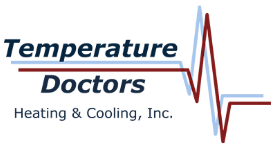Welcome to Our Blog
Insights and Innovations in HVAC
On our blog page, we at Temperature Doctors Heating & Cooling Inc aim to share our knowledge and passion for all things related to heating, ventilation, and air conditioning (HVAC). This space is dedicated to providing you with valuable information, tips, and updates on the latest trends and technologies in the HVAC industry. Whether you’re a homeowner looking to improve your indoor comfort or a business owner seeking efficient solutions for your premises, our blog is here to help guide you.
Understanding HVAC Systems
Our blog series on understanding HVAC systems covers the basics and complexities of heating and cooling your home or business. From explaining how different systems work to offering maintenance tips that can improve efficiency and extend the lifespan of your equipment, these articles are designed to demystify HVAC for everyone. Our goal is to empower you with the knowledge to make informed decisions regarding your indoor climate control solutions.
Energy Efficiency and Sustainability
With growing concerns about climate change and rising energy costs, many of our blog posts focus on energy efficiency and sustainable practices in the HVAC field. Discover how adopting green technologies, such as GeoThermal heating and cooling or high velocity HVAC systems, can not only reduce your carbon footprint but also lead to significant savings on energy bills. We’ll also share practical tips for enhancing the energy efficiency of your existing systems.
Seasonal Care and Maintenance
Keeping your HVAC system in top condition requires regular care and maintenance, especially as the seasons change. Our blog offers seasonal guides that outline essential upkeep tasks and how-tos for preparing your heating and cooling systems for peak performance year-round. These posts are filled with actionable advice to help you avoid common issues, such as system breakdowns during extreme weather.
Latest Trends and Innovations
The HVAC industry is continuously evolving, with new technologies and methodologies enhancing the way we heat and cool our spaces. Stay updated with our blog posts on the latest trends and innovations in HVAC. From smart thermostats and IoT integration to advancements in environmentally friendly refrigerants, we cover the developments that are shaping the future of indoor climate control.
Our blog page is updated regularly with fresh content to ensure you have access to the latest information and advice in the world of HVAC. We invite you to explore our articles, share your thoughts, and even suggest topics you’d like us to cover. At Temperature Doctors Heating & Cooling Inc, we’re not just about providing HVAC services—we’re here to be your go-to resource for all your heating, cooling, and air quality needs.
